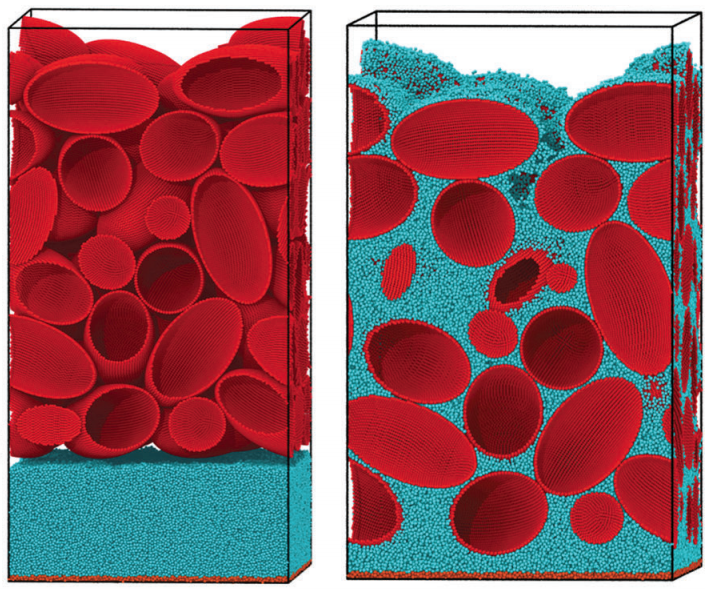Abstract
Although highly packed polymer nanocomposites (PNCs) are important for a wide array of applications, preparing them remains difficult because of the poor dispersion of NPs at high loading fractions. One method to successfully prepare PNCs with high loadings is through capillary rise infiltration, as previously shown by Huang et al., although the mechanism of polymer infiltration remains largely unknown. We use molecular dynamics simulations to directly simulate the process of capillary rise infiltration, and we show that the polymers follow Lucas–Washburn dynamics. We observe a wetting front that precedes bulk infiltration, and chains belonging to this front are highly adsorbed to NPs. We also investigate the viscosity of the model polymers both globally and locally in supported and free-standing films, and we find reduced viscosity near the surface of the films and increased viscosity near the supporting substrate, similar to the results of local relaxation times. The reduction in the viscosity at the free surface for short, oligomeric polymers is smaller than for higher molecular weight polymers, and the ratio of the surface viscosities is most consistent with the predictions of the Lucas–Washburn equation. Our results introduce the mechanism by which polymers infiltrate a highly packed NP film, which may shed light on better ways to prepare these materials for energy storage applications and protective coatings.
